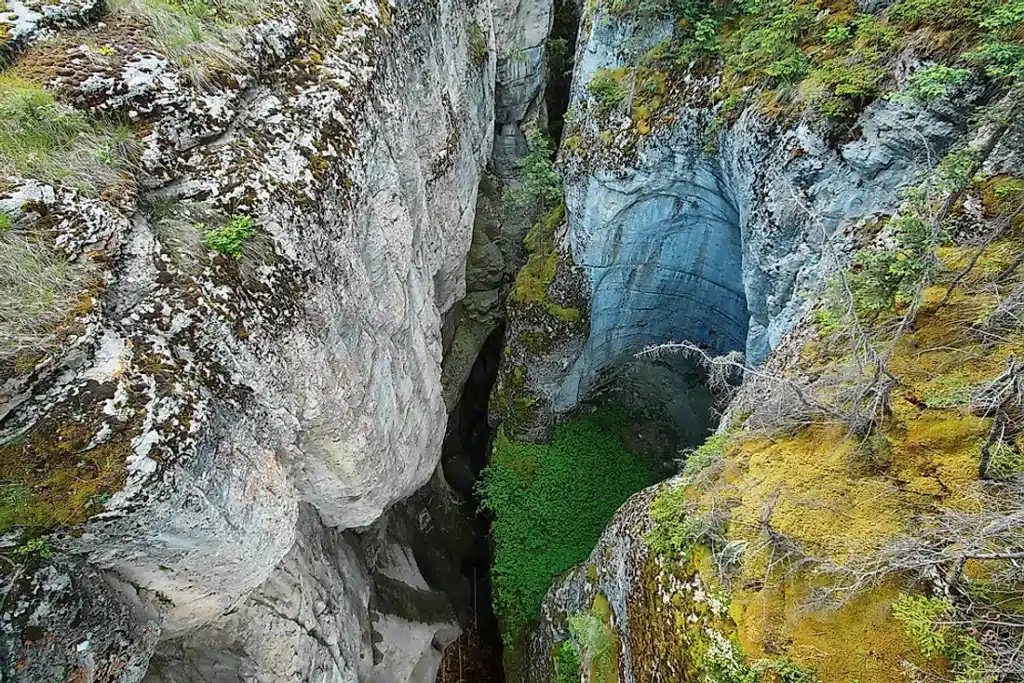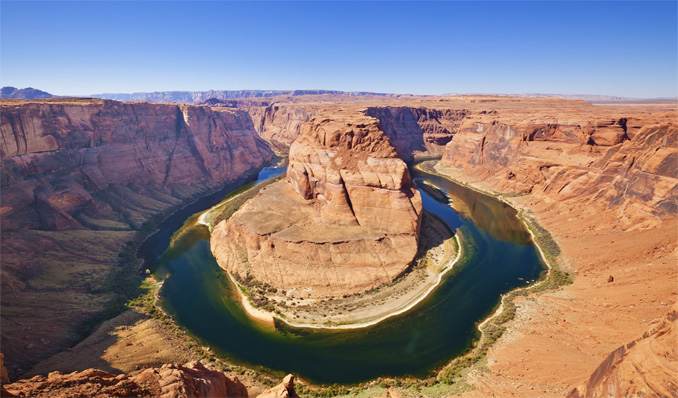- Canyons and gorges are geographical landforms belonging to the broad categories of valleys. Morphologically, they are either V-shaped or U-shaped with a down ward fold extending below the earth surface.
- They are classically low areas and could be separating mountains or hills. More often than not, canyons and gorges have rivers streaming through them and are usually very long and narrow. They are often considered deep valleys with very steep escarpments.
- Though these terms have been utilized interchangeably, there exists some critical differences between a canyon and a gorge in terms of size, mode of formation, localization and preference of usage of the terms.
- In terms of the proportions of the two, a canyon is considered larger than a gorge. They are both deep valleys, but a canyon is often wider compared to a gorge.
- The term gorge is at times used to describe ravines which are narrower than canyons. Canyons are mainly localized to the arid areas while gorges can be found in temperate areas like between mountain ranges.
- While water or lava flow is implicated in the formation of gorges, erosion from a plateau level coupled with resistance of hard rocks to weathering is the manner in which canyons are formed.
- Often, gorges are associated with rivers while canyons are not.
Gorge
- It is a deep valley with very steep to straight sides.
- It is almost equal in width at its top as well as its bottom.
- It is usually forms in hard rocks.
- Example is gorge of Narmada river in Jabalpur district, Madhya Pradesh

Formation Of Gorges
- Gorges form via three forms of natural forces: erosion, geological uplift and glaciers melting. Erosion and washing away of the sediments caused by rivers and streams in valleys is responsible for formation of most gorges in the world.
- Upward movement of the Earth’s surface termed the geologic uplift has been implicated in formation of these land forms. In most cases, geologic uplift works hand in hand with erosion.
Canyon
- It is a variant of gorge only.
- It is characterised by steep step-like side slopes. It may be as deep as a gorge.
- It is wider at its top than at its bottom.
- It usually forms in horizontal bedded sedimentary rocks.
- Example is Gandikota Canyon, Andhra Pradesh

Formation Of Canyons
- Erosion, is the weathering process that leads to the formation of canyons.
- This begins at the table land level and continues downwards.
- Hard rock is resistant to this weathering process, thus remains on the escarpments in form of granite and sandstones.
Canyons, Gorges and Valleys of India
| Canyons/Gorges /Valleys | Location/Place | Details/Remarks |
|---|---|---|
| Gandikota Canyon | Andhra Pradesh | Penner river, Kadapa district of Andhra Pradesh formed by the river Pennar that cuts through the Erramala hills. |
| Gangani Danga Canyon | West Bengal | located on the bank of river Silabati at Garbeta of West Bengal. |
| Chambal River Canyon | Rajasthan | On the banks of Chambal River |
| Sandhan Valley | Maharashtra | Sandhan Valley is a combination of a canyon and valley in the Sahyadri mountain ranges of Maharashtra. |
| Zanskar Valley | Ladakh | Zanskar Valley is a semi-arid region that is nestled in the lap of the northern flank of Great Himalayas. |
| Spiti Valley | Himachal Pradesh | “Spiti” means “The middle land“, i.e. the land between Tibet and India. |
| Papi Hills | Andhra Pradesh | Godavari river, located near Rajahmundry in West Godavari district. |
| Ravines of Chambal | Madhya Pradesh | — |
| Marble Rocks Gorge | Madhya Pradesh | River Narmada near the city of Jabalpur |
| Raneh Falls Canyon | Madhya Pradesh | Ken River, located in Khajuraho |
| Laitlum Canyon | Meghalaya | East Khasi Hills, Laitlum Canyones, which literally means ‘The End of Hills or the End of the Earth’ . |
| Mekedatu Gorge | Karnataka | Kaveri river |
| Satkosia Gorge | Odisha | eastern Odisha, carved by the Mahanadi River. |
| Kangra Valley | Himachal Pradesh | — |
| Araku Valley | Vishakhapatnam | — |
| Flower Valley | Uttarakhand’s Chamoli district | — |
| Ziro Valley | Arunachal Pradesh | — |
| Nubra Valley | Ladakh | — |
| Silent Valley | Kerala | — |

Greatly Explained… Thanks Much!… ✌👏